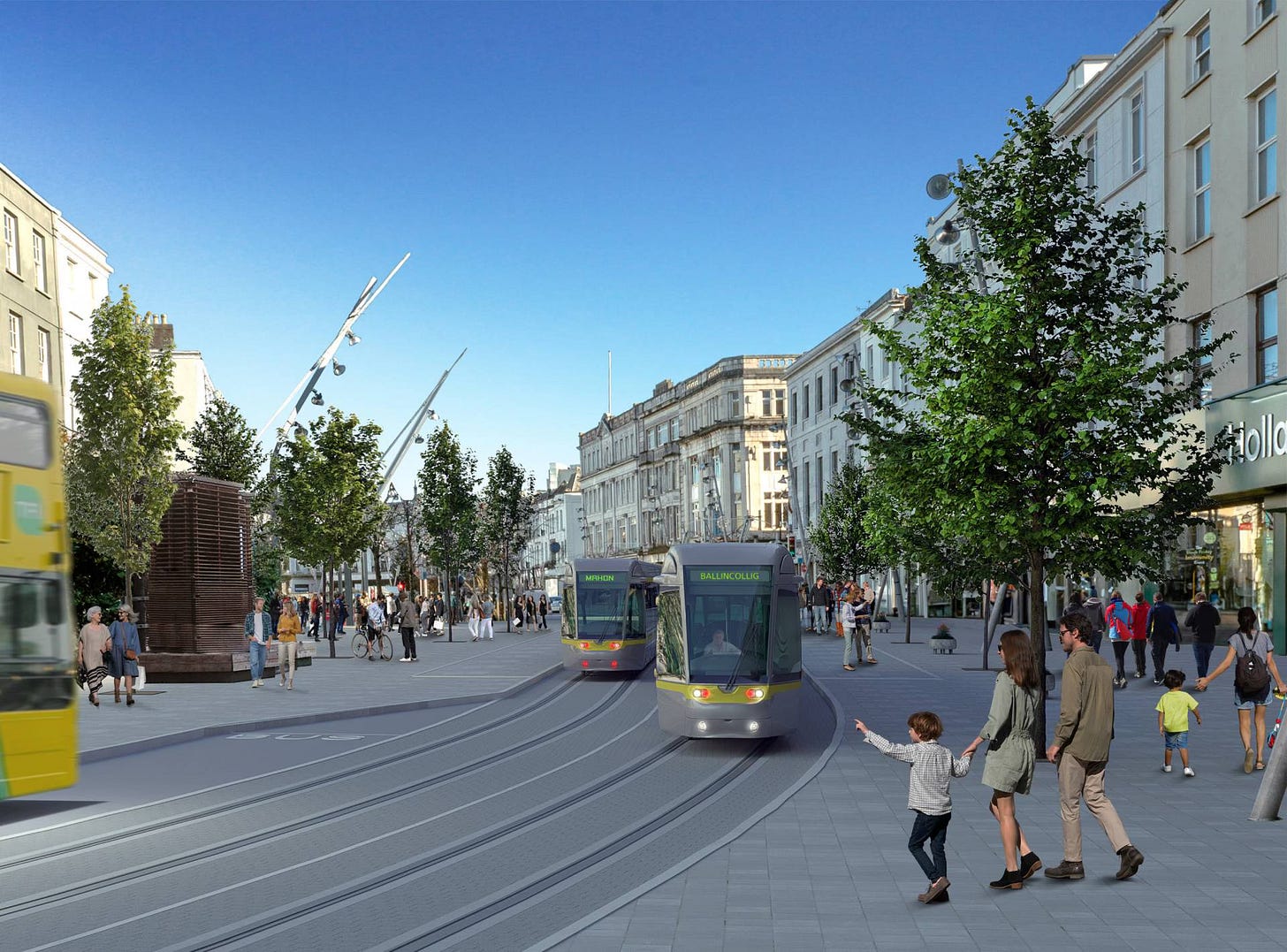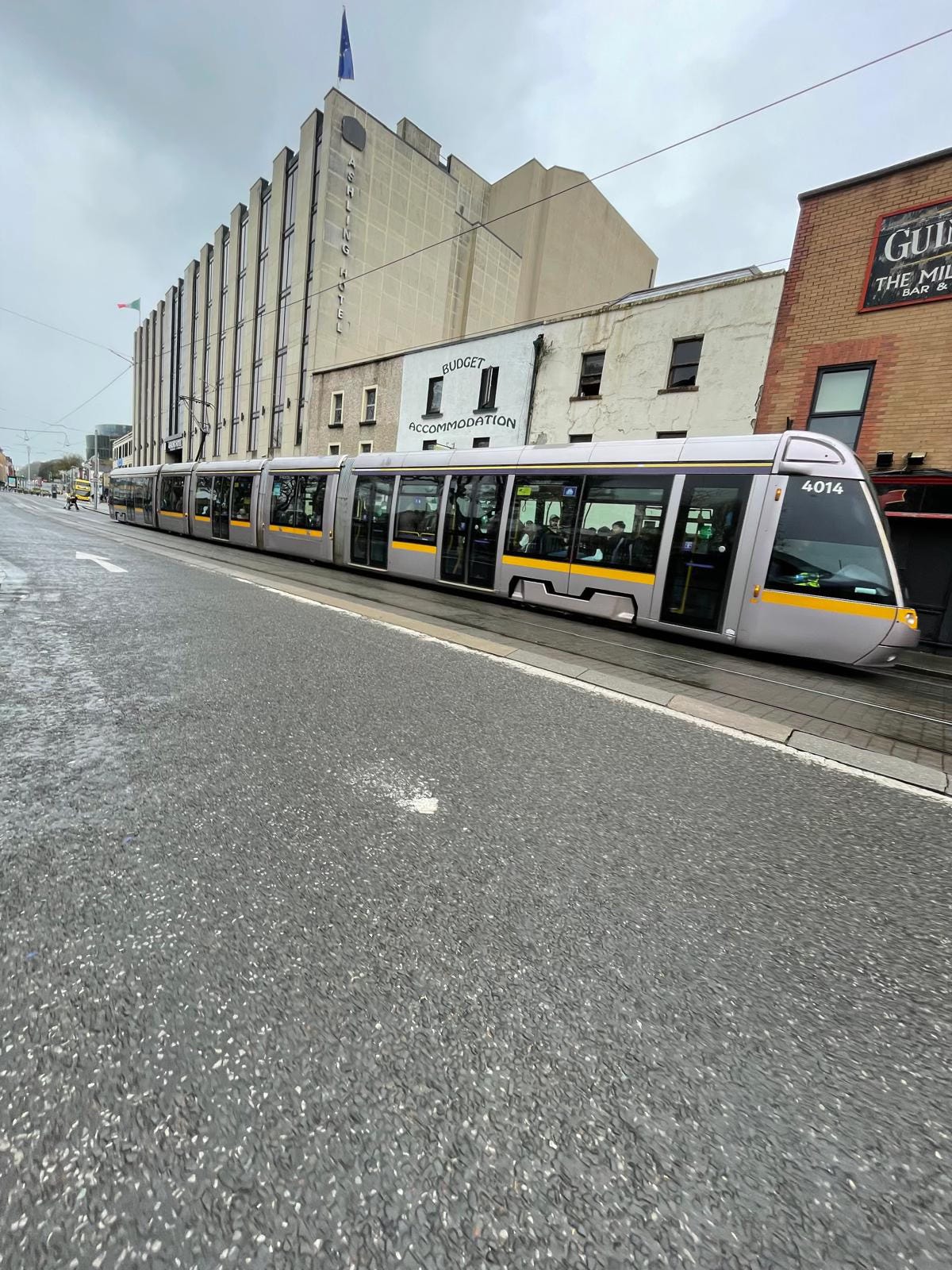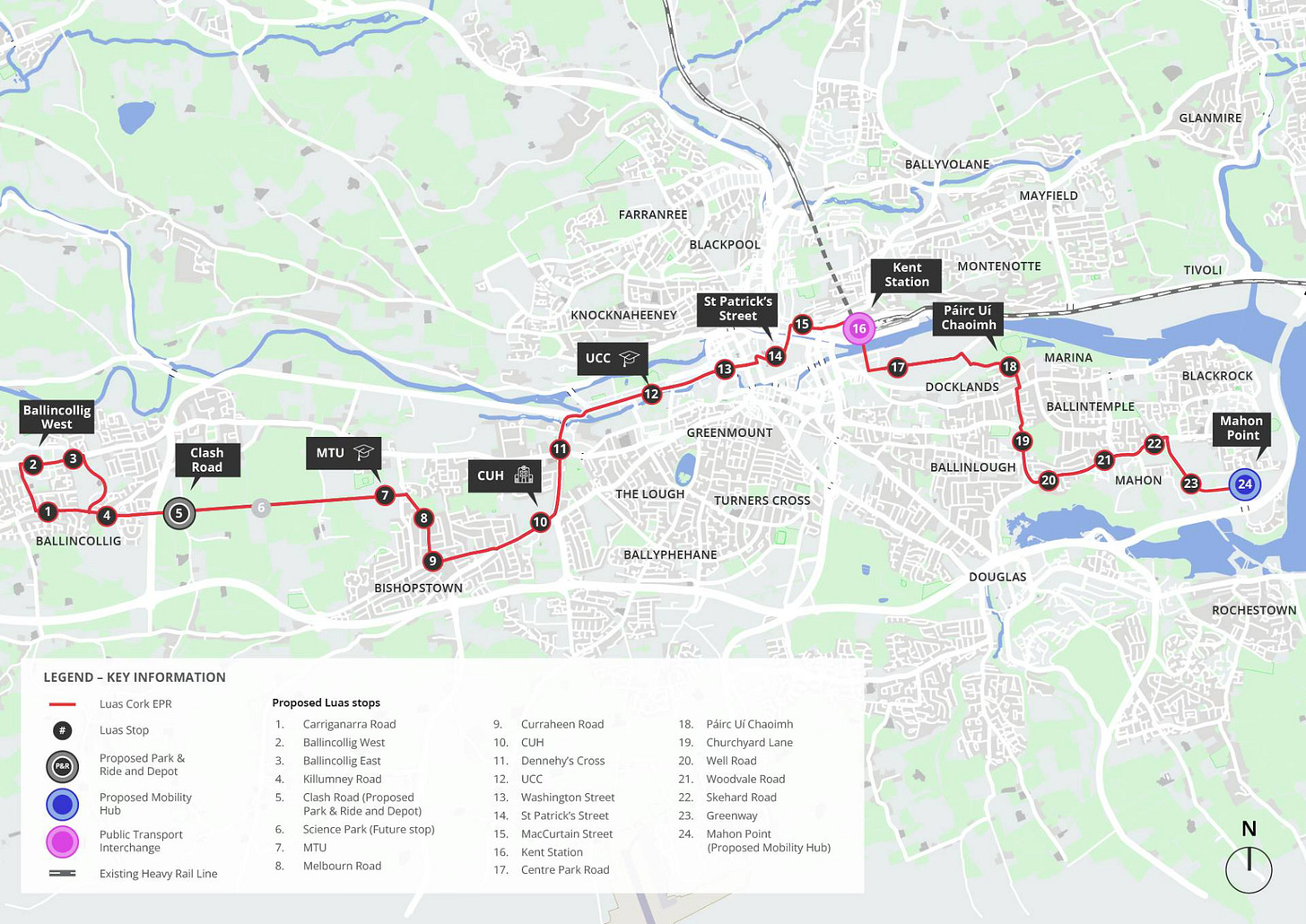Cork has a Luas plan; now comes the hard part
Cllr Oliver Moran attended the launch of the preferred route for the Cork Luas this week. He examines what light rail could bring to the city, and what else is badly needed connect the transport dots.

Great ideas have many fathers. And so great announcements have many elected representatives laying claim.
So it was on Monday, as the Taoiseach, Micheál Martin, announced the public consultation on the route of the Cork Luas in the Millennium Hall of Cork City Council.
So great was the huddle of Fianna Fáil councillors and TDs around the Taoiseach at the media scrum that I lost count. Two determined Fine Gael senators toughed it out among their civil war rivals.
Other parties were denied entrance to the hall while the media event took place. We snuck in through the back door regardless.
Labour made a brave effort to hold their own event. Party leader, Ivana Bacik, travelling from Dublin to give support to her troops on the ground. Among them was Peter Horgan, who a few months ago was accidentally released two CGIs of the now-public route by way of a Freedom of Information request.
Happy was I then that my own party colleague, Dan Boyle, as Lord Mayor, couldn’t be elbowed off stage as he reminded those present that he had first proposed a Cork Luas as TD in 2006.
Whoever owns it, the route for the Cork Luas is here. Eighteen kilometers long, the journey here even longer and with arguably as many twists and turns.
It varies from the outline proposed in the Cork Metropolitan Area Transport Strategy (CMATS) a little. More significantly, although a kept secret at the time, is how it remained true to that course.
In particular, the herculean struggle between Cork City Council and national agencies over Finn’s Corner. The question being if it is possible for a tram to turn left from Washington Street and right onto Patrick’s Street.
It turns out it is, but the consequence if it was not would mean no Cork Luas on Patrick Street, that it would never cross the river to MacCurtain Street, and — most strategically important of all — the Cork Luas would never connect with commuter rail services at Kent Station.
Commuter rail was served as canapé on Monday. The dignitaries to the Luas event calling to Kent Station beforehand for the opening of a new platform.
That platform will see five-minute services arriving from new stations at Blarney, Blackpool and Dunkettle before the decade is out. The Delivery Manager for the Cork Area Commuter Rail Programme, AJ Cronin, being (rightly) named-checked as “the legendary” from the Luas stage in the Millennium Hall.
If the Cork Luas can keep that kind of pace of delivery it will be welcome. As the Lord Mayor said:
"We need to have commitment in relation to the funding that will be available. We need a timetable as to how that will happen. The indicative timetabling as of now, to start in the middle of the next decade and to have this service up and running by 2040, is still too long.
“We can shorten that timeline. We can start things earlier. We can identify the resources to make it available. Because the longer we leave it, the less certainty we will have. But let’s be positive, this will happen and it will be an enormous addition to the inter-connection that is needed for a city of our size."
The Taoiseach said he will do whatever he can to accelerate its delivery but demurred becoming a hostage to fortune for a timeline.
Paolo Carbone of Transport Infrastructure Ireland was more bullish when I asked at a Q&A for public representatives. A second public consultation could happen next year, a railway order sought in 2027 or 2028, and construction take 5–6 years thereafter.
By Tuesday, however, that had become “a very tall task” and, speaking to PJ Coogan on 96fm, he deferred to the Taoiseach’s wisdom instead.
But that’s the kind of pace we need, and faster.
Next month, Cork is expected to sign an agreement with the European Commission to be an EU Mission City to be climate neutral by 2030. Transport emissions count for about a third of all emissions in the city.

Having 65,000 people within a 15-minute walk of a light rail between Ballincollig and Mahon, and being able to connect to high-frequency commuter rail between Mallow and Cobh/Midleton, is the minimum we should expect. Even that will leave Douglas and the north west, including Apple, unserved.
So far behind are we that people say Dublin only now has the public transport that Cork needs. I’ll presume readers of Tripe + Drisheen have less interest in what Dublin needs. The point is, we’re far behind.
The aforementioned Apple have thrown the towel at high-capacity public transport in the city ever reaching them. Last month, the company applied to increase the number of car parking spaces at their new campus, having previously wanted a lower number based on public transport provision.
"Apple make significant efforts and have achieved considerable success in promoting sustainable travel modes for their employees,” the consultants for the company said in the planning application, “At present, 24.6% of the workforce use public transport and or the Apple shuttle bus. This is almost triple the Cork Metropolitan Area figure of 7.4% and is close to the CMATS 2040 ambition of 25.7%.”
“[However], it became apparent that there would be significant delays in the delivery of the BusConnects network and the Northern Distributor Multi Mode Route. [Now], having regard to the delay in the improvement of public transport infrastructure and in order to ensure the continued efficient operation of the Apple Campus, the applicants require an additional 285 no. spaces.”
That sentiment is shared by many waiting on seeming never-ending pullbacks on delivery of BusConnects.
I’ve learned to take a little of the Taoiseach’s medicine and have given up assuring residents in communities promised buses that it will here be 2024, … no, 2025, … no, 2026. Now, I only say what the current state of delivery is and leave it to the receiver to decide when a bus might arrive.
Even without a timetable, what is now presented for the Cork Luas is short of what was promised.

My colleague Feljin Jose, from the remove of Dublin, could see that capacity had been cut to 16 million journeys per year on Monday from 46 million proposed in CMATS and that journey times from Ballincollig to the city centre had gained eight minutes.
Ciarán Meers, chairperson of the Cork Commuter Coalition, pointed out the same issues and that the projected journey time of 35 minutes from Ballincollig to the city centre is not competitive with either bus or car.
With PJ Coogan on the Opinion Line on 96fm, Paolo Carbone said that more trams could be added after launch and that these could be made longer if needed. The limit, he said, is interacting with other traffic. The route shares the road along much of its journey, crossing traffic lights, lagging behind private vehicles, and no doubt having to negotiate illegally parked cars on MacCurtain Street.
Given our experience with the “Panaban” that element of the plan needs to get real.
Political representatives may have been crowding for attention on Monday. Will they be so willing to crowd onto an undersized tram, jerking behind private traffic, and taking longer to get from Ballincollig to City Hall than if they drove?
Answers on a postcard to luascork before Monday, 9 June.
Cllr Oliver Moran is the Green Party Councillor for Cork city North East. You can read his monthly newsletter here. Cllr Moran’s fee for this article has been donated to the Cleft Lip & Palate Association.
From the archive:
8 new train stations are planned for Cork but will they be on track by 2030?
It will be 15 years next year since a train station was opened in Cork, and even then, when Midleton train station came back online in 2009, that was the result of opening a shuttered station.








Fun fact: Cork used to have about 6 city centre train stations and an extensive commuter rail network about 100 years ago. I don't know how or why they managed to completely mess it up. No use crying over spilled milk I suppose.
Me Hole won’t let his ppl down